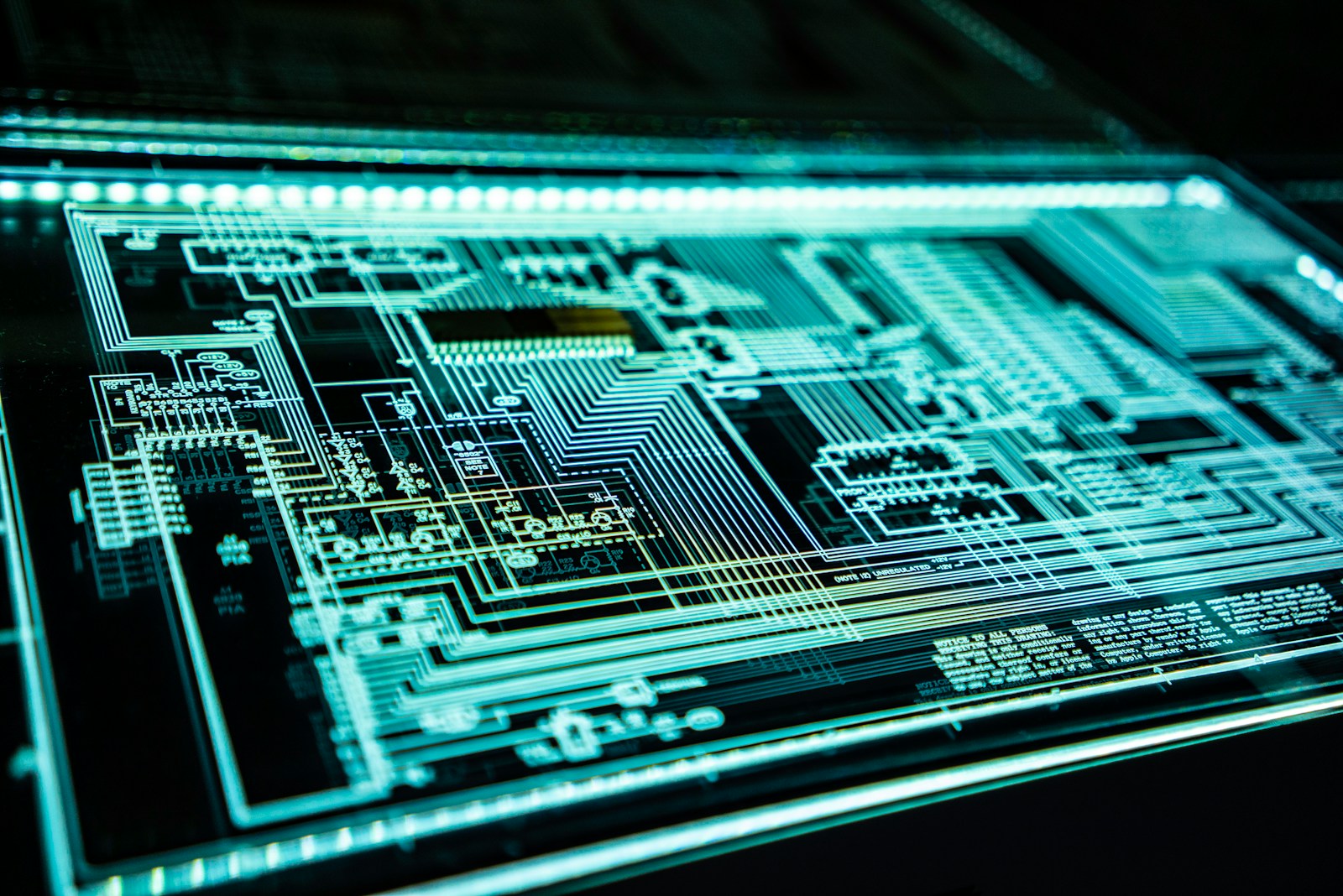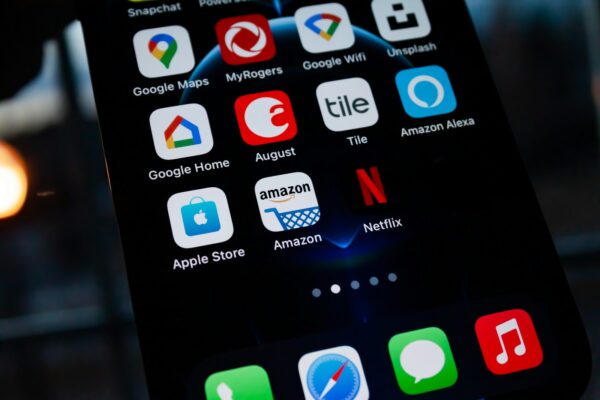Keeping up with new tech trends requires significant attention. The global AI market will grow to $191 billion by 2025, demonstrating rapid advancement. This guide explains ten significant tech changes that will shape our future in simple terms.
These developments will influence technology’s future!
Generative AI
Generative AI leads the tech world with its amazing power to create human-like content. This smart tech will grow to $667.9 billion by 2030, making it a huge force in our daily lives.
AI systems now make better choices for businesses and help students learn in new ways. The global economy will gain $4.4 trillion each year from this tech boom.
Generative AI marks the biggest leap in how machines help humans create and learn.
AI tools now offer custom learning paths for each student. These smart systems suggest the best vendors and help companies make smarter choices faster. The market shows strong growth at 24.4% each year from 2023 to 2030.
This growth proves that AI will change how we work and learn.
Generative AI continues to advance, shaping creative fields and optimizing data-driven tasks by generating new content and solutions from existing data sets.
AI tools now create amazing things in art, writing, and business. These smart systems help people make new content faster and better than before. The market for AI will grow to $667.9 billion by 2030, showing how much people want this tech.
Google’s Gemini model leads the way in making AI smarter at tasks like writing and problem-solving.
AI brings big changes to how we work and create. It adds $4.4 trillion to the world’s money each year through better data use and faster content creation. The tech grows at a fast rate of 24.4% each year from 2023 to 2030.
AI helps search engines give quick, clear answers to people’s questions. Machine learning makes the AI better at spotting patterns and fixing problems on its own.
Quantum Computing
Beyond AI’s creative power, quantum computing brings a massive leap in processing speed. IBM states these super-fast computers will work 100 million times faster than today’s machines by 2025.
This means tasks that once took thousands of years can now finish in just hours.
Quantum computing makes huge strides in drug research, money matters, and climate studies. The tech market keeps growing fast, creating many new jobs for quantum experts. These experts help build special computer parts and write new codes.
Big companies need these skills to solve hard math problems and protect secret data.
Quantum computing is poised to exponentially increase computing power, impacting fields like cryptography and complex data analysis.
Quantum computing brings a huge leap in computer power. IBM plans to make quantum systems 100 million times faster than today’s computers by 2025. These super-fast machines can solve hard problems in hours instead of thousands of years.
This speed boost will change how we handle data and keep information safe.
Quantum computing doesn’t just change the game – it creates an entirely new playing field for technological advancement.
PsiQuantum leads the way in making quantum computers that work at a large scale. Their focus stays on better drug research and stronger data protection. These machines use special quantum math to process huge amounts of data faster than ever before.
The impact on science and security will be massive.
Synthetic Biology
Synthetic biology brings amazing changes to our lives through smart genetic changes. Scientists now create special microbes that help make new medicines and better crops. Top companies like Ginkgo Bioworks lead the way in making useful microbes for many tasks.
This new field helps us fight diseases and grow more food with less waste.
Genetic engineering tools make plants stronger and more resistant to pests. These tools also help clean up the earth and make new fuels that don’t harm our planet. Many big companies team up with biotech firms to solve big problems.
They use microbes to make things we need while helping the earth stay clean. This science makes farming better and creates new ways to make medicine.
This technology enables scientists to redesign organisms for useful purposes by engineering them to produce substances like pharmaceuticals and biofuels.
Scientists now create new living things in labs to help make medicines and clean fuel. Companies like Ginkgo Bioworks lead the way in making special microbes that help grow better food and crops.
These tiny organisms work like tiny factories to make what we need.
Labs across the world use bioengineering to solve big problems. They make crops that can grow with less water and plastics that break down naturally. This helps our planet stay healthy while making useful products.
The microbes they create can make new drugs faster and cheaper than old methods.
Bioprinting
Bioprinting leads the way in medical breakthroughs for 2025. This amazing tech creates human tissues that doctors can use to test new drugs. Companies like CELLINK now print complex body parts for healing and research.
The process mixes living cells with special materials to build new organs layer by layer.
Medical teams use bioprinting to make better treatments for sick people. This tech helps grow food crops that can fight off diseases and produce more food for everyone. Bioprinting tools make stronger plants that give us more to eat.
The future looks bright as this tech helps people live longer and keeps our food supply safe.
Advancements in bioprinting mean that 2025 could see significant progress in printing biological tissues and organs, potentially transforming medical treatments.
Medical science takes a huge leap forward with 3D printing of human organs and tissues. CELLINK leads the way in making bioprinters that create human tissue for testing new drugs. This amazing tech uses a person’s own cells to print new organs.
Right now, 100,000 people in the U.S. need organ transplants. The new printing method could save many lives.
Scientists can now print parts that work like real hearts and livers. These printed organs could help sick people get better faster. The process uses special printers to make living tissue layer by layer.
Doctors hope this will cut down the long wait times for organ transplants. This new way of making organs could change how we treat many health problems.
Autonomous Vehicles
Self-driving cars will change how we travel in 2025. These smart vehicles use AI and sensors to drive without human help. Companies plan to add them to delivery fleets, which will cut labor costs.
Tests show these cars can lower upkeep costs by 40% through AI-powered checks.
Driverless vehicles make roads safer and cleaner. The cars’ smart systems help reduce traffic jams and car crashes. AI guides these unmanned vehicles to pick the best routes. Smart transportation leads to less pollution and better city planning.
These robotic cars will make daily trips easier for everyone.
Improved sensors and AI algorithms are making autonomous vehicles safer and more reliable, promising a shift in how we commute.
Autonomous vehicles now lead the way in modern transport. Advanced sensors and AI systems make cars safer on roads. Aurora Innovation brings new tech to both trucks and passenger cars.
These smart vehicles cut down travel costs and make trips safer for everyone.
The future of daily travel looks bright with self-running cars. AI helps these cars make quick, smart choices on roads. Fleet owners can now use these cars for better delivery services.
The tech makes sure packages arrive safely and on time. Smart cars also help reduce traffic problems in cities. They follow rules better than human drivers and stay alert all the time.
Decentralized Finance (DeFi)
Decentralized Finance brings a new way to handle money without banks. People can now lend, borrow, and earn interest on their crypto money directly with each other. DeFi makes all money moves clear and fast through blockchain tech.
Many startups like Aave show how this new system fixes old money problems.
Big companies now team up with DeFi startups to create better money services. This team effort helps make new ideas grow faster. DeFi goes beyond just crypto coins to change how we use money every day.
Extended Reality marks the next big shift in how we mix real and digital worlds.
DeFi uses blockchain technology to remove financial intermediaries, offering more accessible financial services directly from peer to peer.
Blockchain technology makes money moves faster and safer between people. Smart contracts cut costs by 40% and speed up money transfers without banks getting in the way. People can now send money straight to each other through peer-to-peer networks.
Supply chain tracking gets better with blockchain, dropping errors by 95%. The system also helps keep medical records safe, with 80% fewer data breaches in healthcare. These improvements make financial services easy to use for more people around the world.
Green Hydrogen
Beyond digital finance, green energy leads the next big shift in tech. Green hydrogen stands out as a clean power source that will change how we use energy by 2025. This new form of energy helps cut carbon output and makes power use better for Earth.
Companies like Plug Power show how new businesses can use green hydrogen to fix climate issues.
Big changes are coming to how we make and use energy. Green hydrogen fits into plans for clean power all over the world. It offers a fresh way to power cars, homes, and factories without hurting our planet.
This tech marks a key step toward clean energy that will help many countries meet their goals to stop climate change.
As a clean energy source, green hydrogen could play a critical role in reducing carbon emissions in various industries.
Green hydrogen stands as a powerful tool to fight climate change. Companies like Plug Power lead the way in making hydrogen fuel cells that create clean energy. This clean fuel makes zero harmful gases when used, unlike oil or gas.
Many industries can use green hydrogen to run their machines and vehicles without hurting our planet.
The future looks bright for green hydrogen in 2025. More money will go into making this clean energy source better and cheaper. Green hydrogen helps big factories and trucks run without making dirty smoke.
This clean power choice creates new ways for companies to make money while helping the Earth stay clean. Smart businesses now pick green hydrogen to show they care about our planet’s health.
Advanced Robotics
Clean energy and robotics both push technology forward. Advanced robotics brings big changes to many jobs and places. Smart robots now work in factories to make things faster and safer.
They help doctors do surgery and take care of sick people. These robots make fewer mistakes than humans do.
Robots also help old people and those who can’t move well to live better at home. More companies want to hire people who know about robots and AI. These experts help make robots work better in stores, hospitals, and other places.
Smart robots make work easier and safer for everyone.
Robots are becoming more sophisticated and capable, with applications expanding into healthcare, manufacturing, and personal assistance.
Advanced robots now help in many parts of our daily lives. Agility Robotics leads the way with smart robots that can move packages and make deliveries just like humans. These robots work in factories to build things faster and better than ever before.
They also assist doctors in the operating room with exact cuts and tiny tools that make surgery safer for patients.
Smart robots make life easier at home and work. They handle tough jobs in factories and help doctors do surgery with great care. Medical robots can now do complex operations through small cuts, which helps patients heal faster.
These amazing machines keep getting better at what they do, making our lives simpler and safer each day.
AI in Cybersecurity
AI in cybersecurity brings powerful tools to fight digital threats. Smart machines now guard our data and spot problems faster than humans can. These AI systems work day and night to catch bad actors before they steal important files.
Real-time tracking helps stop attacks as they happen, keeping our digital stuff safe.
The market for AI security tools keeps growing bigger. Companies need these tools to protect their networks from smart hackers. AI helps security teams work better by doing the boring tasks for them.
This lets people focus on fixing the big problems that machines can’t handle yet. AI Trust, Risk, and Security Management makes sure these systems stay honest and fair. More IT teams now use AI to make their security stronger and faster.
With cyber threats increasing, AI-driven cybersecurity solutions are becoming essential for protecting sensitive data and systems.
Modern cybersecurity needs smart tools to fight digital threats. AI tools now guard data and catch bad actors faster than humans can. Darktrace’s plan to buy Cado Security shows how companies want better AI defense systems.
These AI tools work non-stop to spot strange activities in computer networks.
Smart security systems now use Zero Trust rules to keep data safe. This means checking every user and device that tries to access networks. AI helps protect important data during big events like global elections.
The systems also watch for threats from different countries. These tools make it easier to find and stop attacks before they cause harm.
Extended Reality (XR)
Extended Reality brings amazing changes to how we learn and work. XR technology helps companies train their workers 40% faster than old methods. Students learn better too, with schools seeing 75% more student interest when using AR and VR tools.
The XR market will grow to $98 billion by 2025, making big waves in many jobs.
XR makes training safer and cheaper through life-like practice sessions. Healthcare staff can practice surgeries without risk. Pilots can learn to fly in safe settings. Store workers can master new skills through virtual practice.
These tools now offer better picture quality and touch feedback for real-feeling experiences. More schools and companies pick XR for teaching because it works so well.
XR technologies are merging the physical and virtual worlds more seamlessly, enhancing experiences in gaming, training, and remote work.
AI-powered XR technology brings exciting changes to how we live and work. This mix of virtual reality and augmented reality creates new ways to play games, learn, and work from home.
The market for XR will grow to $98 billion by 2025, showing how popular these tools are becoming.
XR makes training better through real-life practice sessions. Workers can learn new skills in safe, virtual spaces that feel just like the real world. Companies now use XR to show products to customers in amazing ways.
People can see and touch items in 3D before they buy them. Remote teams also benefit from XR as they can meet in virtual rooms and work together like they’re in the same place.
Bottom line
These ten technologies are just the tip of the iceberg. As we look to 2025, the integration of these innovations will likely reshape our daily lives, offering new opportunities and challenges. Keeping an eye on these developments is crucial for anyone involved in tech, from developers to policymakers
Tech changes will bring big growth by 2025. The AI market will hit $191 billion, while quantum computers will work 100 million times faster than today’s machines. These tools will make our lives easier and create new jobs.
Smart cars will drive themselves, and virtual reality will change how we learn and work.
The future holds great promise for everyone in tech. 5G networks will connect more devices than ever before. Virtual and augmented reality will grow into a $98 billion market. These advances will create fresh chances for growth in many fields.
Tech experts and leaders must stay alert to use these tools well.
Discover the latest smartphones set to revolutionize mobile technology in 2025.




